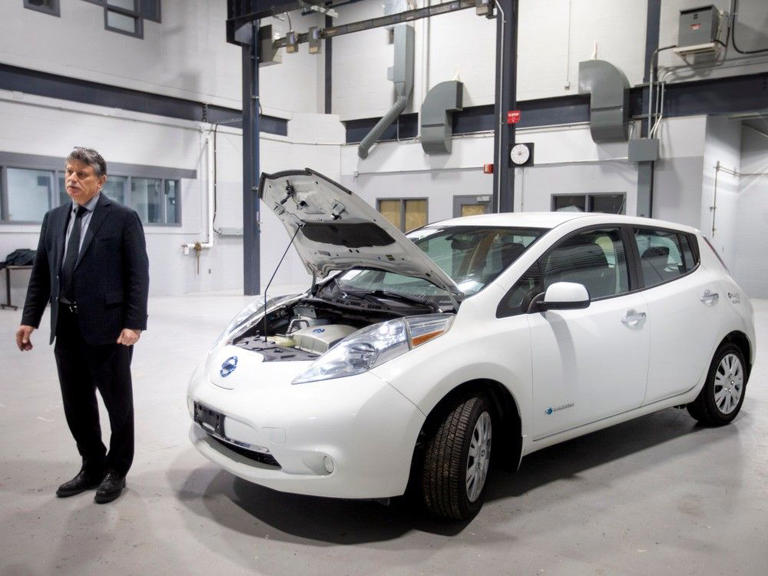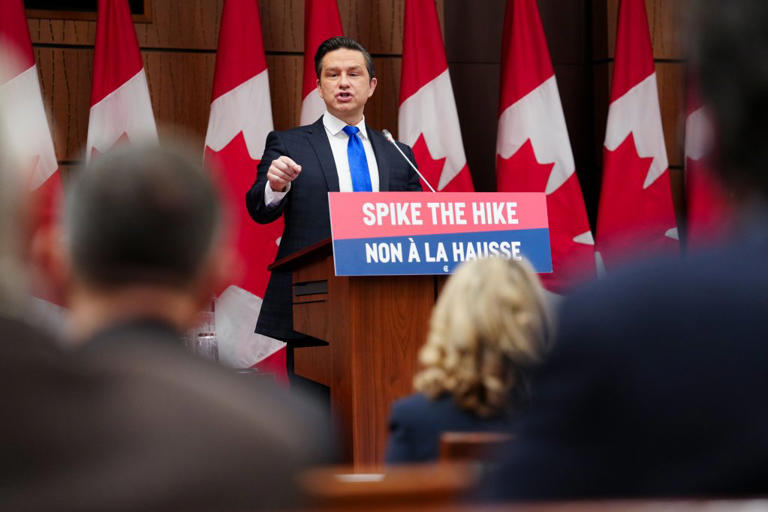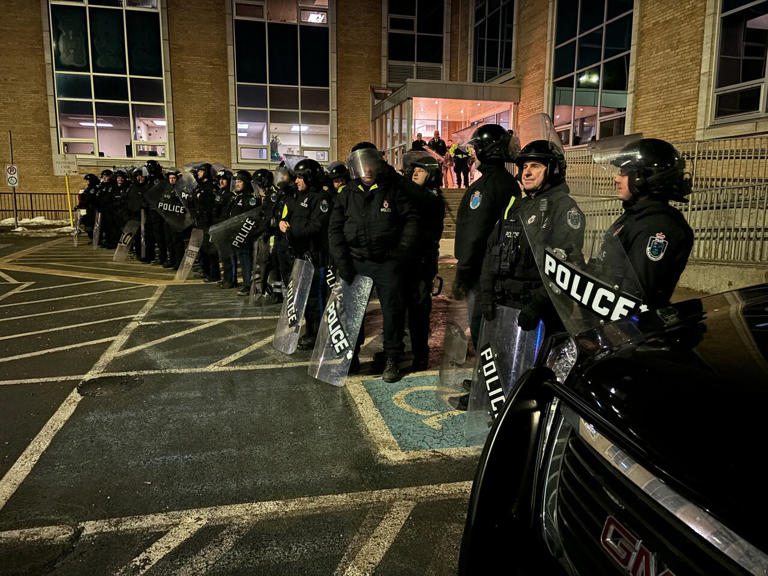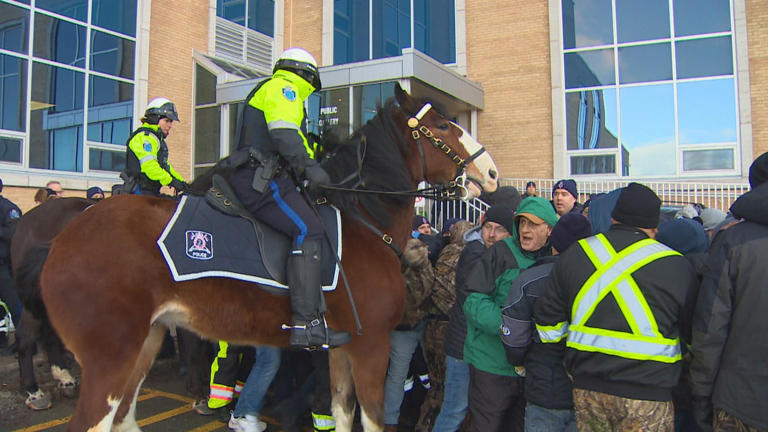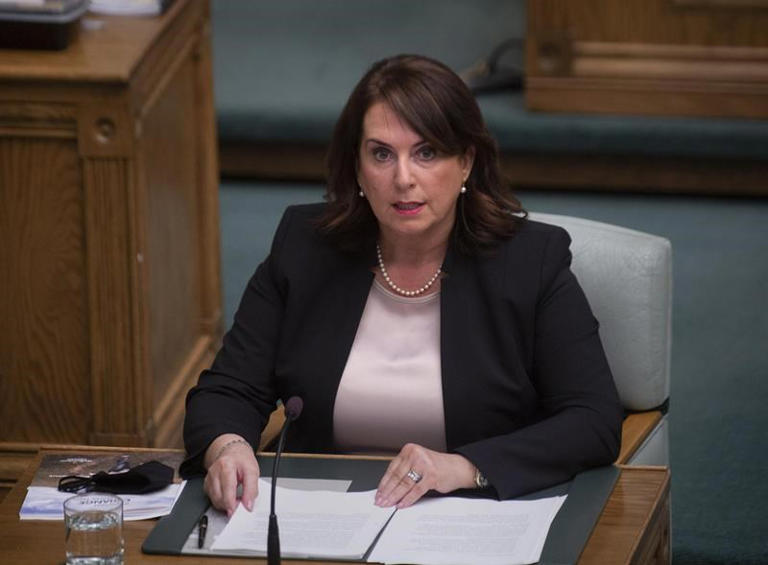Imagine you are a moose, chomping away on some twigs without a hint of concern in your beautiful, tennis-ball-sized brain. If a 700-pound machine zooms up behind you, roaring like a vacuum cleaner with a chainsaw attached, you might be inclined to stop what you’re doing and try to stomp it into smithereens.
At least, that was the reaction Cory Burrows got when he encountered a moose while snowmobiling in the Rocky Mountains west of Denver. “I basically did a backflip off the machine and started sprinting,” Burrows, a guide for tour operator Grand Adventures, told me. “I ended up crouched behind a tree just watching the moose on the trail above me. He was fuming.”
When Burrows and I met to traverse a snowy trail outside Winter Park, Colorado, in February, he was more sanguine as he scanned the trees ahead. The snowmobiles we sat astride this time were electric and, as such, hummed along as quietly as a refrigerator.
“As far as I can tell, the moose don’t pay attention to them,” he said.
The humble snowmobile, a staple of winter travel in northern latitudes, is finally going electric. Motivated by a wave of green consumers and emissions mandates in U.S. national parks, manufacturers are trading long trips and a facility with fresh powder for a lighter carbon footprint and near silence, while working on next-gen machines that offer more functionality and fewer compromises.
Late last year, BRP Inc., a Canadian motorsports empire, introduced a pair of electric snowmobiles to tour operators including Grand Adventures. In February, the company doubled down, unveiling its first electric models for individual consumers. The U.S. offering, the Ski-Doo Expedition Electric, comes with a price tag of US$17,000, compared with about $11,300 for one of the company’s gasoline-burning equivalents. Its European cousin, the Lynx Adventure Electric, runs consumers about €21,000 (US$22,800).
Also on the market is an electric snowmobile from Canada-based Taiga Motors Corp., which only makes battery-powered machines and has produced roughly 500 of them since launching in 2015. The Ski-Doo zips at up to 31 miles an hour and covers about 30 miles on a charge. Taiga says its version gets up to 62 miles per charge.
“Six or seven years ago, if you mentioned the idea of an electric snowmobile, you’d get laughed out of the room,” said Taiga Chief Executive Officer Sam Bruneau, who likened his company to Tesla in the early days of EVs. “It was so far out of their minds and that’s what really created the opportunity for us.”
Even more competition is on the way: Vidde Snow Mobility AB, a Swedish startup, plans to deliver its first 1,000 electric sleds later this year, including a batch bound for the storied Icehotel in Jukkasjarvi. Minnesota-based Polaris Inc., which makes a variety of off-road vehicles, has its own prototype of a battery-powered snowmobile; although it declined to say when it will start cranking out a production version.
“For commercial customers in particular, zero-emission is a big deal,” said Josh Hermes, Polaris’ vice president of off-road EVs.
Snowmobiles aren’t a natural fit for electric drivetrains. Cold weather drastically crimps battery chemistry and range along with it, while the vehicle’s movement comes from what is essentially a conveyor belt of paddles pushing the snow. Friction is unavoidable. A bigger battery makes for more range, but adds weight that increases the friction, diminishing returns for riders.
“Honestly, a snowmobile is one of the worst vehicles to electrify,” said BRP CEO José Boisjoli, describing it as solving a puzzle that pits size against range against price point. “But we need to start somewhere. People are more and more conscious of the planet.”
To reduce drag and increase range, BRP fits its electric sleds with smaller, narrower skis on the front and a shorter track with smaller ridges underneath. That helps them churn away efficiently on a packed trail, but it means that for now the electric models flounder in deep, untouched powder.
Those wintry hurdles are a major reason other off-road vehicles got the Tesla treatment first. Last year, Polaris started shipping an electric version of its Ranger XP Kinetic, a golf cart on steroids that the company pitches as ideal for quiet hunting or life alongside nervous livestock. Even that product is aimed at “utility” customers like farmers, and not the average recreational adrenaline junkie.
Utility customers have “easy access to charging and they’re not traveling long distances,” Hermes said. By contrast, just five per cent of snowmobile use is job-related, according to estimates from the U.S. Department of Agriculture.
Boisjoli said BRP is quickly expanding the range on its electric machines; and for shorter trips, the current models are plenty. Three times a day, Burrows runs Grand Adventures’ sleds on hour-long tours, then charges them for an hour before sending them out again. In the morning, he doesn’t have to arrive early for fueling. “I literally just unplug them and we go,” he said.
BRP plans to offer an electric option in every category of vehicle it makes. The company will launch a battery-powered motorcycle this year, a hydrofoil next year and eventually a boat. There are also plans for an all-terrain vehicle and an off-road two-seater.
“To develop a good mountain snowmobile that’s electric, it’s impossible,” Boisjoli says. “Maybe in 20 years. But we cannot ignore that there is a trend out there toward greener products. We want to be a pioneer on this.”
Polaris has been less strident about electrification, but says the technology is already a good fit for utility applications: farms, resorts, property managers and other work-related trips. “We’re going to be very intentional about where and when we chose to commercialize electric vehicles,” Hermes said. “But those customers tend to travel at slower speeds and shorter distances. And they’ve got easy access to charging.”
From a climate perspective, electric snowmobiles are a no-brainer. While the U.S. doesn’t regulate snowmobiles’ greenhouse gas emissions, even the most efficient models typically emit far more, mile for mile, than internal-combustion cars. That’s why Yellowstone National Park, for example, caps snowmobile visitation at 720 machines a day and only permits vehicles that meet strict emissions and noise thresholds.
But snowmobiles’ overall emissions footprint is tiny. For one thing, there aren’t that many of them. While drivers buy about 67 million cars and trucks every year globally, annual snowmobile sales hover around 125,000, according to the International Snowmobile Manufacturers Association. That makes the entire planet’s snowmobile market roughly the size of the car market in Utah. Across the U.S., there are only 1.3 million registered sleds.
Bruneau at Taiga concedes that going electric also has a negative stigma for many snowmobile enthusiasts. “You can see it in our social [media] comments,” he said. “Fifty percent of people are staunchly against electric and 50 per cent are very pro-electric.”
That’s why his company’s pitch is as much about expanding the market as it is about winning over incumbent riders. Almost one-third of Taiga’s retail orders have come from people buying their first snowmobile, according to the company. “A lot of people like vehicles that are loud and pollute,” Bruneau said. “But a lot more people stay away from them because of those things.”
Deep in the mountains of Colorado, it’s easy to see the appeal of electric models. While a gas-burning sled is about as loud as a tractor-trailer, BRP’s battery-powered Ski-Doos sound more like box fans — a constant “shush” from the gliding skis up front mixed with a subtle “whir” from the tread paddling away at the snow underneath. The machine also gets going quickly, offering the same kind of instant, low-end torque Tesla drivers are so fond of.
When the Ski-Doos got down to their last electrons, Burrows led us off of a snowy peak and back to a lodge nestled at the base of the mountain range. The moose never showed, but a pack of friendly dogs scrambled out to meet us as we pulled up to a dozen Level-2 chargers sticking out of the snow like parking meters.
“These will be ready to go in the morning,” Burrows said. “We’ve been out there two hours, but honestly I think they can go three.”



